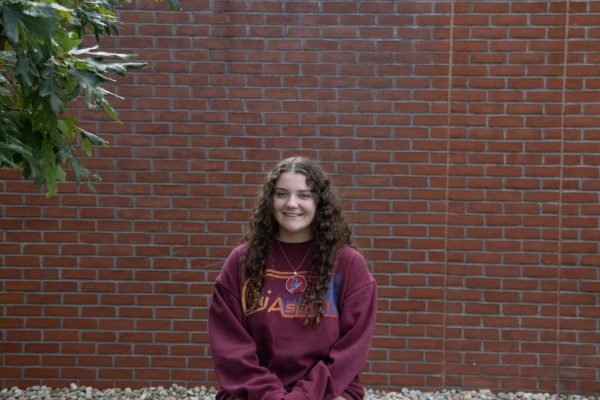The Beginning of a New Chapter
At the start of the school year, our school’s journalism program, The PawPrint, had a significant shift. After years of being led by Ms.Chausse, a former English teacher here at The Morgan School, the class has found itself in new hands after her retirement. English teacher Mr. Carroll stepped up to take over the class. Now, this was not just a change in teacher, it was a complete upbringing of the entire program. And with a new set of eyes and management this year, the program has been reimagined with the belief in giving students a voice.
“I had a panic attack first,” Carroll admits, laughing now, months later. “It’s a lot of stress. Journalism is so different from any other class.”
The Preparation
Carroll didn’t walk into this position blindly. He had previous journalism experience at Brian McMahon High School with a successful program. So when Ms. Chausse decided to step down, she knew exactly who should step up to take her place.
“She knew it was something I cared about,” Carroll said. “When she asked me to take over, I was excited. Nervous, but excited.”
To ease his nerves, he found himself doing what any good journalist would do, reach out. He emailed several journalism advisors from Connecticut to Texas for ideas, inspiration, and guidance. Slowly, things began to feel right and fall into place.
The Biggest Challenge: Trust
Despite his previous experience, after the first semester of teaching, one thing became much clearer to him. This class was less about teaching content and more about trust, which didn’t come so naturally to him because he is so used to being in more of a teacher-student environment, and this class is very much student-run. He knew he needed to build an environment with trust, and knowing the editors helped a lot, “they stepped up on their own,” he explained.
Carroll started the year very cautiously, treating the program as if nobody had ever taken it before, and progress was very slow. “It took a long time to build that trust, the entire first semester,” he explained. “I needed to know who to count on, and they needed to understand what was expected. That was the hardest part.”
The Turning Point
While Carroll knew the biggest challenge was getting things started and producing articles, as the second semester approached, he realized in order to do that, he needed to touch base with his editors and let them run the show.
“The second semester was like night and day,” he said. “Editors were teaching routines and leading each other. The room felt alive.”
One of Carroll’s proudest moments was getting the print magazine started. “There’s something powerful about seeing someone read your work,” he explained. “Reading from the website is one thing. But when it’s on print in the magazine, something people physically hold, it’s different.”
He also praised the transformation of the Morgan PawPrint Instagram account. It went from being just a feed and became a way to show stories. “If you scroll through it, you get a real picture of the school year.
Beyond the Grade
For Carroll, the most impactful part of journalism is what his students take away from it. Not only writing skills, but also confidence and ownership when sharing their work.
“When students stop caring about the grade and start writing for the audience, that’s when I know I’ve done something right.”
Looking Forward
Carroll has big plans for the program, like printing colored magazine issues, submissions to local and national newspapers, and for students to earn recognition outside the walls of The Morgan School.
Editor Saoirse O’Beirn, who has been in the program for three semesters, has a lot of love for this class. She says, “I personally want to be a journalist when I am older, so I take this program seriously. This year, Carroll really reformed the program and made it like an actual news platform, and I think it was really helpful for me and everyone else who is trying to become a journalist. Overall, the class was fun and I made some lifelong friends.”
Advice for Future Journalists
For anyone considering joining the program, Carroll says, “Take it, and then take it again.” He explains how the “first time is a learning curve, and it’s so much better the second time around.”
Carroll believes that journalism is one of the few classes that mimics the real world. Deadlines, teamwork, leadership, accountability, but most importantly, the classroom is a community. Students are all working on different projects for a common goal.
“I’m always excited for journalism every day because I am doing something that really matters,” he said.



